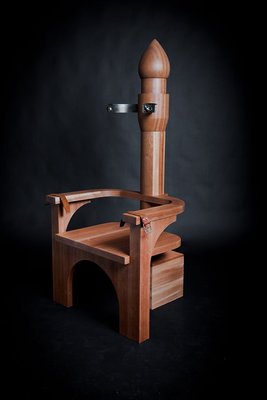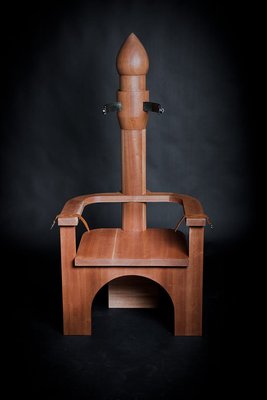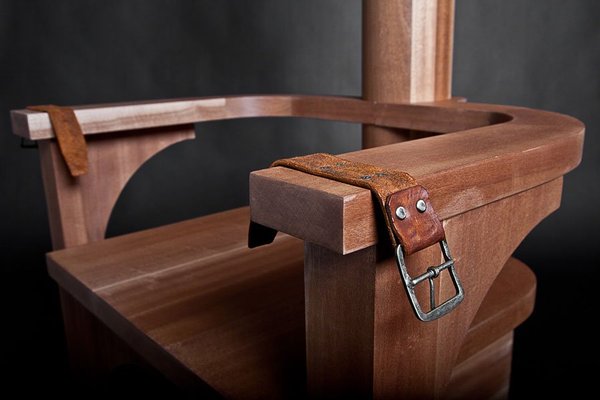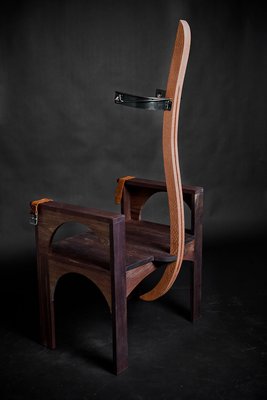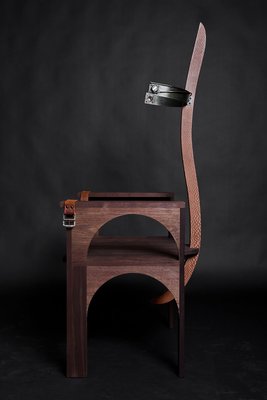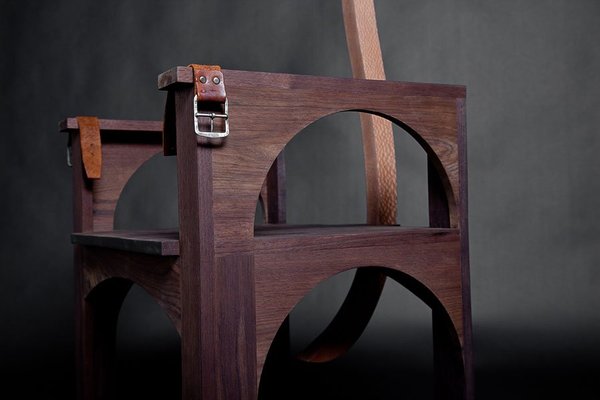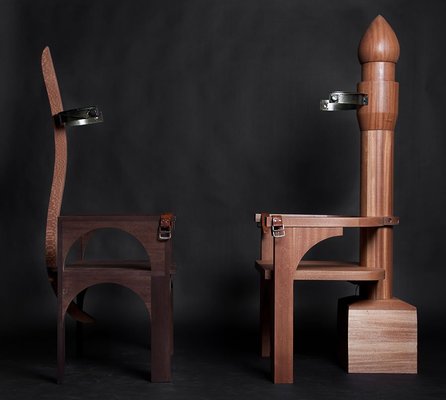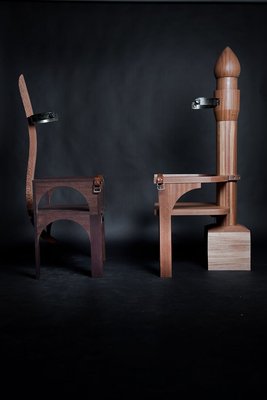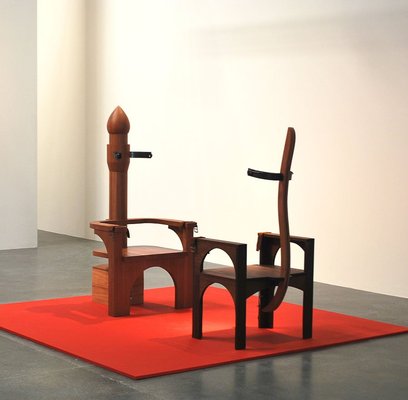Platform for discussion004
With the benefit of hindsight, what role does new media play in artistic practices, activism, and as an agent for social change in the Middle East and North Africa today?
Sama Alshaibi
vs. The Ruler, 2011
Detail of male throne, installation, wood, leather, brass, speakers, sound, variable dimensions
Nadour Collection
Image courtesy of the artist and Lawrie Shabibi
vs. The Ruler was made during the first year of the Arab uprising. It is comprised of two custom-made wooden 'electrocution' chairs (thrones) sitting in opposition to each other. The patriarchal male throne suggests the military and religion. Its counterpart is also suggestive of Islamic architecture, but is grounded by the human spine. Embedded with audio-scapes, the chairs invite audiences to sit and listen to the other's 'trial'. The male throne weaves excerpts of various public speeches from the region's threatened dictators, which are enunciated by a single voice. In turn, the female counterpoint reverberates with the feeds from my own social media community – status updates compiled from Twitter, Facebook and blog posts. The multiple voices assembled from the dictators and online community is compressed into the singular voice of one female and one male and can only be listened to by one audience member at a time, evoking the paradox of this age of digital media and networking, in which the global, disparate and intertwined voices of so many are in the end still filtered and understood through the narrow, singular mind of one person at the receiving end of it all.
What is a platform?
A platform is a space for speaking in public. It is an opportunity to express ideas and thoughts. It also suggests the formal declaration of a stance or position on any given subject.
Unique to Ibraaz is a 'platform', a question put to writers, thinkers and artists about an issue relevant to the MENA region. This platform is sent to respondents both within and beyond the MENA region and contributions will be archived every 12 months.

